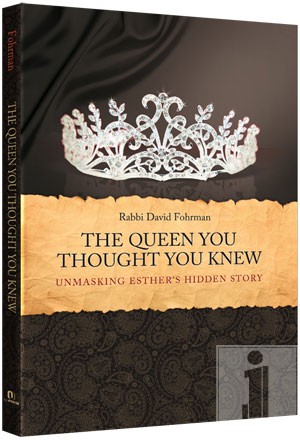The Book of Esther can easily masquerade as a child’s tale. There’s a villain out to hang Mordechai and murder his countrymen; a king who enjoys drinking; and a beautiful and noble queen. There are assassins, palace intrigue and a climactic battle scene — and a happy ending, to boot. What more could you ask for in a good child’s story?
The holiday associated with the book can seem child-like, too. Purim is celebrated with costumes, carnivals, and abundant merriment. Kids dress up as Esther, Mordechai, Haman and Achashveirosh, wearing plastic hats and cellophane scepters. Purim is the great holiday of make-believe.

All this make believe, though, can have unintended consequences. Chief among them is the fact that many of us are likely to remain with childlike views of Purim and the Megillah long after we’ve turned adults. Our perspective upon Mordechai and Esther and their struggle can easily remain as one-dimensional as the face paint we use to impersonate these people in costume.
In this book, Rabbi Fohrman invites the reader to look at the Book of Esther with fresh eyes; to join him, as it were, on a guided adventure — a close reading of the ancient biblical text. In so doing, he reveals another Purim story; a richer, deeper narrative more suited perhaps, to the eyes of an adult than to a child. As layers of meaning are gradually revealed, Esther’s hidden story comes alive in a vibrant, unexpected way — offering the reader a fascinating and stirring encounter with the queen whose costume they wore as children — the queen they thought they knew.
For more information or to purchase please visit Artscroll.com

Leave a comment
All comments are moderated before being published.
This site is protected by hCaptcha and the hCaptcha Privacy Policy and Terms of Service apply.